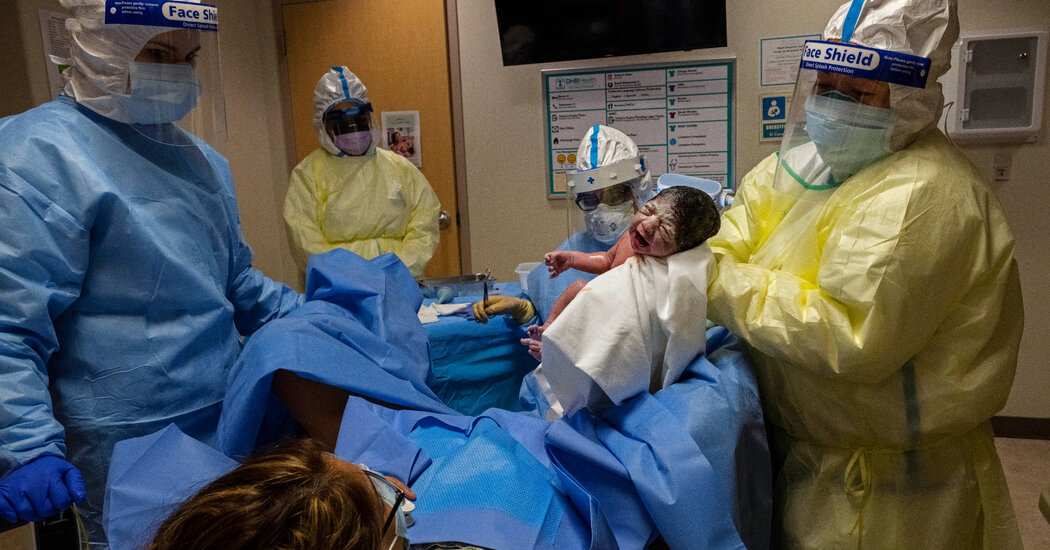Biden Administration to Curb Toxic Pollutants From Chemical Plants
WASHINGTON — The Biden administration on Thursday proposed a new regulation to significantly reduce hazardous air pollutants from chemical plants, a move that environmental advocates predicted would significantly reduce the health risks to people living near industrial sites.
The proposed Environmental Protection Agency rule calls on chemical plants to monitor and reduce the amount of toxic pollutants released in the air, including the carcinogens ethylene oxide, an ingredient in antifreeze, and chloroprene, which is used to make the rubber in footwear.
The proposed rule would affect the vast majority of chemical manufacturers, applying to more than 200 facilities spread across Texas and Louisiana; elsewhere along the Gulf Coast; the Ohio River Valley; and West Virginia. It would update several regulations governing emissions from chemical plants, some of which have not been tightened in nearly 20 years.
The action is part of the Biden administration’s effort to address the disproportionate impact of environmental hazards facing communities that surround chemical plants. Known as fenceline communities, they are generally low-income, minority neighborhoods with elevated rates of asthma, cancer and other health problems.
“This is probably the most significant rule I’m experiencing in my 30 years of working in Cancer Alley,” said Beverly L. Wright, executive director of the Deep South Center for Environmental Justice. She was referring to the nickname given to an 85-mile stretch of land along the Mississippi River that is home to more than 150 petrochemical plants and oil refineries.
Dr. Wright spoke in St. John the Baptist Parish, La., where Michael S. Regan, the E.P.A. administrator, had traveled to announce the new rule. Mr. Regan had visited St. John the Baptist Parish and other fenceline communities during a 2021 tour he called “Journey to Justice.”
The proposed regulation would mark the first time that the E.P.A. considered the cumulative impacts of more than one chemical plant on a community, rather than simply the effect of a single source of pollution.
“We are poisoned, and we are sick, and we are finally able to address some of the multiple chemicals that are poisoning us at the same time, causing rare and different cancers,” Dr. Wright said.
In February, the E.P.A. and the Justice Department sued a chemical manufacturer in St. John the Baptist Parish, Denka Performance Elastomer, arguing that it had been releasing unsafe concentrations of carcinogenic chloroprene near homes and schools. Federal regulators had determined in 2016 that chloroprene emissions from the Denka plant were contributing to the highest cancer risk of any place in the United States.
“For generations, our most vulnerable communities have unjustly borne the burden of breathing unsafe, polluted air,” said Mr. Regan. “When I visited St. John the Baptist Parish during my first Journey to Justice tour, I pledged to prioritize and protect the health and safety of this community and so many others that live in the shadows of chemical plants. I’m proud that this proposal would help deliver on that commitment.”
The rule would require large chemical plants that manufacture chemicals like ethylene oxide, chloroprene and benzene, used in products like plastics, vinyl flooring and PVC piping, to rigorously tighten controls and processes in their facilities in order to limit emissions of the chemicals into the surrounding communities.
Manufacturers would need to aggressively monitor vents and storage tanks for chemicals escaping into the air, and plug the leaks.
They would also need to continually check not just smokestacks and vents at the manufacturing facilities, but also whether the chemicals of concern are present at the property line of a plant. That kind of fenceline monitoring is similar to those required of petroleum refineries.
The American Chemistry Council, which represents chemical manufacturers, issued a lengthy statement saying it is still reviewing the E.P.A. rule.
But the trade group said it is “particularly concerned” about the agency’s efforts around ethylene oxide, noting it is used in many products like the development of batteries for electric vehicles. It also is according to the U.S. Food and Drug Administration one of the only effective means of sterilizing medical equipment.
“We support strong, science-based regulations for our industry. But we are concerned that E.P.A. may be rushing its work on significant rule-making packages that reach across multiple source categories and could set important precedents,” the group said in a statement.
Roger Gingles, the secretary of Louisiana’s Department of Environmental Quality, who appeared at the announcement with Mr. Regan, was cautiously supportive of the proposed rule.
“We look forward to science-based enforceable standards by which we can regulate hazardous air pollutants,” he said.
Judith Enck, a former E.P.A. regional administrator, said the proposed rule is an effort to correct a federal regulatory system that for decades only sought to address the impacts of one chemical in isolation.
“That’s not how it works in the real world,” said Ms. Enck, who is now president of Beyond Plastics, an environmental group. “When you live next to an industrial facility you’re not just exposed to mercury, you’re not just exposed to heavy metals. It’s a witches brew.” She called the proposed rule “extremely important.”
The agency will accept public comments on the proposal for 60 days before finalizing it, likely next year.


